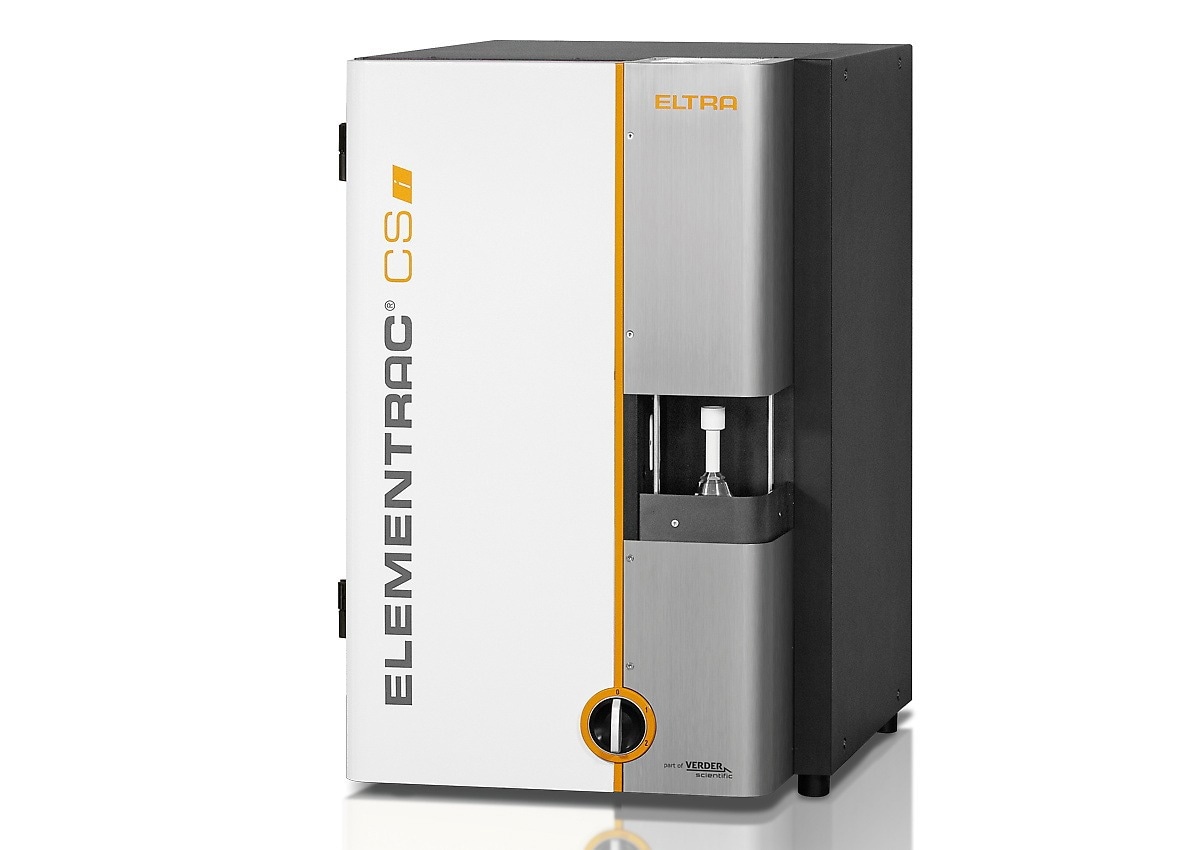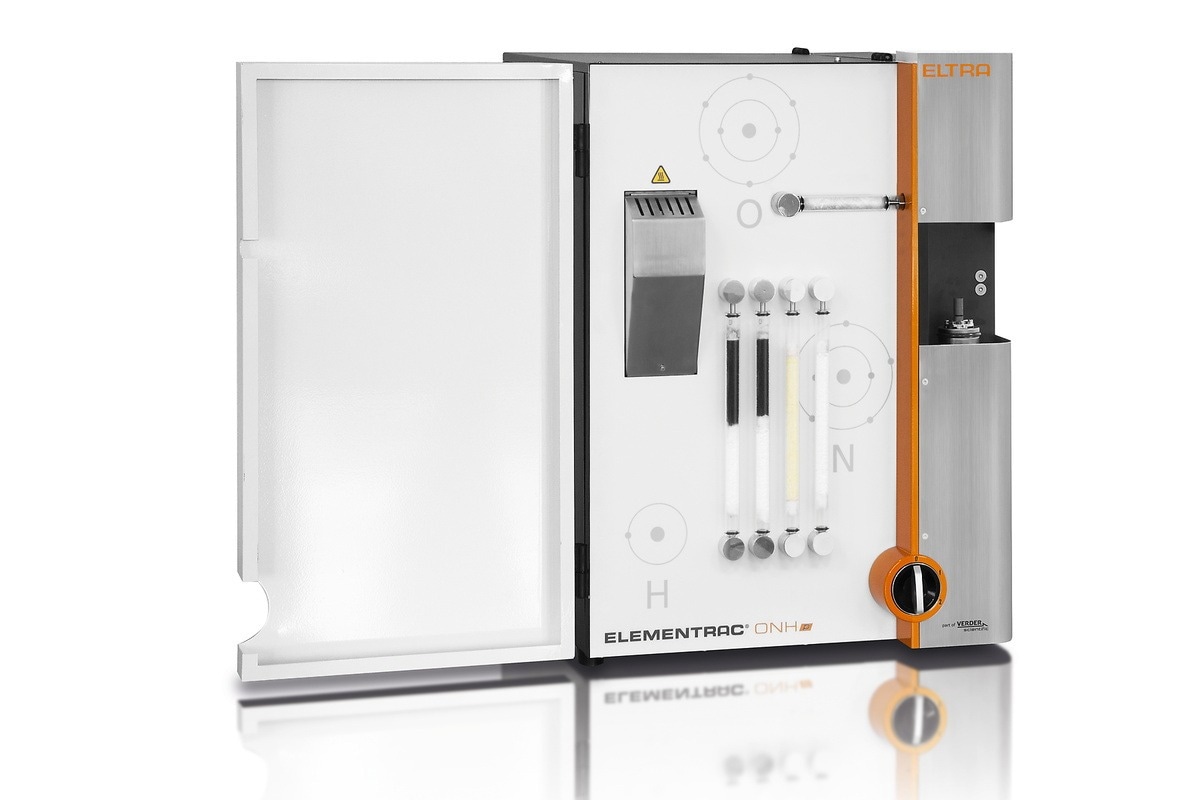Could you please introduce ELTRA and Verder Scientific and outline your role at the company?
Verder Scientific works to set a gold standard for high-tech quality control and R&D solutions in analytical laboratories, research institutions and cutting-edge manufacturing companies.
The company’s solutions range from sample preparation and particle characterization through to element analysis, heat treatment and hardness testing. The group has over 1,000 employees in 22 offices worldwide.
Verder is able to deliver a range of benefits for customers’ processes, outcomes, profitability and sustainability.
Each individual Verder Scientific company – including ELTRA – offers decades of experience in their specialist fields, culminating in a wide range of collective expertise and knowledge.
What roles do ELTRA’s elemental analyzers fulfill, and how do these fit into the wider battery space?
ELTRA’s range of elemental analyzers can accommodate the analysis of carbon, hydrogen and sulfur. A number of analyzers are available for oxygen-hydrogen-hydrogen, which include a Thermogravimetric Analyser (TGA).
ELTRA's range of analyzers is primarily employed in research and development, quality control of finished products, as well as in production process controls.
Solid materials are affected in different ways by the presence of specific elements such as hydrogen, sulfur, nitrogen, oxygen or carbon.
For example, coal’s carbon content impacts its energy value, while in steelmaking, both carbon and nitrogen will affect the steel’s final properties, including its ductility and hardness. Oxygen in steel can lead to corrosion, however.
ELTRA's analyzers allow users to test materials for these elements, determining their concentration offering useful insight into a final product’s properties and overall quality.
Two ELTRA analyzers are typically used in the battery industry: the ELEMENTRAC CS-i – for carbon and sulfur analysis – and the ELEMENTRAC ONH-p – for the analysis of oxygen, hydrogen and nitrogen in solid materials.
What benefits does the ELEMENTRAC CS-i offer users in the battery industry, and how is this typically used?
The ELEMENTRAC CS-i is employed in the determination of carbon and sulfur in inorganic materials, making it ideal for use with practically any battery component material.
Many furnaces utilized in battery materials production have working temperatures of more than 2500 °C. As the ELEMENTRAC CS-i is a combustion analyzer, samples are combusted, resulting in one or more reaction gases that can then be analyzed using solid infrared absorption.
ELTRA's analyzers use this robust technology to measure either sulfur, carbon or the total concentration of these two elements. ELTRA's analyzers are capable of measuring the low, medium, high and full working range, and this can be customized to meet individual customers’ requirements.
The ELEMENTRAC CS-i’s offers a market-leading range able to accommodate concentrations from 0.6 ppm to 64% sulfur in one gram of sample material and 0.6 ppm up to 7% carbon in one gram of sample material.
It offers exceptional low readings in the lower range and is equally reliable in the high measuring range, even when working with low sample weights between 50 and 1000 milligrams. These analyzers are rapid and user-friendly, providing an accurate result in under a minute.
Compressed air and pure oxygen are all that are needed to operate the analyzer. These serve as a reaction gas in the analyzer. A range of optional features are also available, including a carrier gas purification furnace, an autoloader, a halogen trap and a vacuum cleaner.

Image Credit: ELTRA
What does a typical workflow for the ELEMENTRAC CS-i look like?
The process begins with a sample material such as a piece of metal or a chemical like lead sulfate. The sample name is entered into a PC-based interface prior to placing the sample in a crucible under a balance. The balance will weigh the sample and send this measurement to the software automatically.
Next, the operator places the crucible in the analyzer and pushes the start button. That is the full process, and there are no specific sample preparation requirements.
The furnace will heat the atmosphere with oxygen, causing both the elements of interest – carbon and sulfur in this case – to react and burn. Carbon burns to CO2 and sulfur to SO2, and we are able to measure those reaction gases in infrared cells.
This entire process takes between 40 and 60 seconds, with sample preparation typically taking 10 to 15 seconds. Overall, it only takes around a minute to prepare a sample and obtain results in the software.
One of the most frequently encountered applications in the battery industry is the testing of battery paste for lead sulfate. This testing is performed according to a specific recipe.
As both the battery paste and lead sulfate are non-inductive, they will not heat sufficiently to emit the lead sulfate on their own. They must, therefore, be mixed with an accelerator to make sure that the samples will heat up and burn.
This process sees the operator use a dosing spoon to weigh between 50 and 100 milligrams of sample into a ceramic crucible before placing the crucible in the analyzer. This straightforward process can also provide results within 60 seconds.
The analyzer provides accurate, precise results, even when taking into account its ease of use and the speed of acquisition. For example, the analysis of a series of PbSO4 mixtures and measuring the same lead sulfate mixture three times verified that the same contained 1.95% sulfur.
The results showed a deviation of only 100 ppm – just 0.5% relative deviation – highlighting the excellent repeatability offered by the ELEMENTRAC CS-i analyzer.
How do these capabilities and workflows compare to those of the ELEMENTRAC ONH-p analyzer?
The Elementrac ONH-p analyzers have a similar, very easy workflow but utilize a different technology. Oxygen, nitrogen and hydrogen are detected by using the inert gas fusion technology. In an impulse furnace, with temperatures, exceeding 3000 °C, those elements are extracted from virtually all inorganic solid materials. We are able to detect them in levels, much lower than 1ppm up to high concentrations. This makes the Elementrac ONH-p ideal for applications in the battery industry
The ELEMENTRAC ONH-p also features a thermal conductivity detector ideal for analyzing nitrogen and hydrogen content (or any compound of these) with high sensitivity and repeatability.
Typical sample quantities for this analyzer are 50 to 1000 milligrams, depending on material and concentration of the analytes. Of course we offer guidelines to our customers, the ELTRA Application Notes, where we recommend the best suitable sample amount and more. Typical analyzis time is 2-3 minutes only.
The carrier gases required are helium, nitrogen or argon, depending on the application in question and availability on site. This analyzer also utilizes a balance for measurement and a PC for its interface.
Sample preparation with solid samples takes about 10 seconds, and sample preparation with powder samples takes between 30 and 40 seconds. Measurement in this instance is completed within 2 to 4 minutes.
Once the start button in the software has been pressed, the graphite crucible will be heated between the upper and the lower electrode. The strong electrical current passing through the graphite means this can be heated up to 3000 °C, though it is possible to select lower temperatures and lower powers.
It is this heating process that triggers reactions in the sample. For example, oxygen reacts with the crucible to form CO and then CO2, which can be accurately measured via the infrared sensor.
Hydrogen and nitrogen will be released as gases at high temperatures, and it is possible to measure these using the instrument’s highly sensitive thermal conductivity detectors.
Even a low mixture of nitrogen or hydrogen in the carrier gas will change its thermal conductivity, generate a signal and enable a result to be calculated.
The analyzer’s smart sample drop allows that the sample to fall directly into the graphite crucible. This feature makes sample preparation straightforward for metal and other powders. This is particularly important as these sample types are common in the battery industry. The analyzer can accommodate samples in the form of a pin, a basket, granulates or a capsule filled with powders.
Dust represents a key challenge when working with touch measurements. The use of high temperatures, high electrical current, potentially harsh powder samples and graphite crucibles can lead to significant dust generation.
While this may pose a problem for other instruments, the ELEMENTRAC ONH-p confidently accommodates these issues with an automated cleaning system, continuing to offer accurate measurements and good repeatability.

Image Credit: ELTRA
What are the other key features of the ELEMENTRAC ONH-p and ELEMENTRAC CS-i analyzers?
The ELEMENTRAC ONH-p and ELEMENTRAC CS-i are extremely simple to use. These systems require only minimal sample preparation, and they are accessible to users of all experience levels, allowing them to achieve consistently fast results – up to 30% faster than other standard analyzers on the market.
Both instruments are powerful and can measure carbon, sulfur, oxygen, nitrogen and hydrogen, meaning they are both well suited for use with practically any material found in battery components.
These analyzers have been specifically designed for use with inorganic samples, meaning they can be used with powders, metals or chemicals. They are also robust enough to work with ‘dirty’ samples, with their autocleaners making them ideal for demanding applications which generate significant amounts of dust.
Both analyzers offer distinctive smart solutions for powders, including unique parching options for powders not introduced via a carrier gas or a sample drop. These options can be introduced into the analyzer with minimal sample preparation.
The optional auto loader is an excellent option when working with high sample throughput.
It is also important to note that the analyzers’ software has been developed in-house and is designed to offer a range of automatic diagnostics and LIMS compatibility, allowing it to automatically report data via smart reports. This is an excellent choice and service for customers or a control department.
Online diagnosis capabilities are included in each instrument, allowing service technicians to directly connect to the device and troubleshoot issues.
Both analyzers can be optionally Internet of Things (IoT) enabled, facilitating direct connection via a smartphone or tablet, and broader laboratory systems can also be automated.
Recent years have demonstrated that the analysis of powder samples is becoming increasingly central to quality control. The ELEMENTRAC series of analyzers are powerful options for users looking to quickly and accurately analyze these sample types, particularly in the battery industry.
About Kaan Toprak
Kaan Toprak is a chemist who studied at the Universities of Cologne and Munster. As a specialist in instrumental analysis, he has been working for ELTRA for 10 years as Sales Manager, responsible for export.

This information has been sourced, reviewed and adapted from materials provided by ELTRA GmbH.
For more information on this source, please visit ELTRA GmbH.
Disclaimer: The views expressed here are those of the interviewee and do not necessarily represent the views of AZoM.com Limited (T/A) AZoNetwork, the owner and operator of this website. This disclaimer forms part of the Terms and Conditions of use of this website.